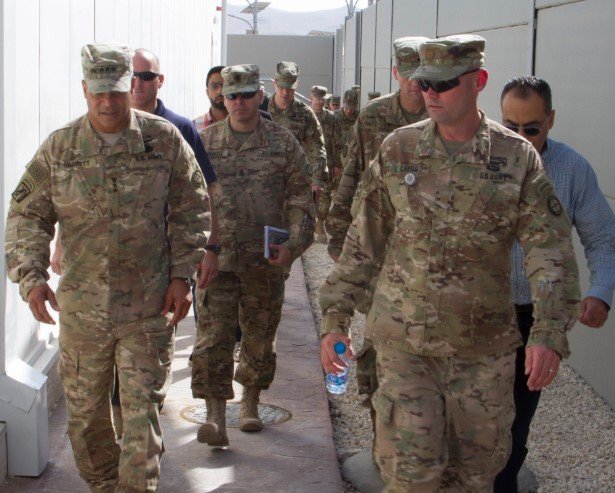U.S. and Jordanian troops wrapped up an intense and unprecedented combat training program at Fort Johnson, Louisiana—marking the first time a Jordanian Armed Forces (JAF) unit has ever participated at a U.S. Army combat training center. The joint exercise signals growing trust and tactical alignment between the two allies.
From Amman to Fort Johnson: Why This Moment Mattered
This wasn’t just another training mission. For the Jordanians, it was a test of adaptability and cooperation under pressure—far from home, in unfamiliar terrain, alongside one of the world’s most seasoned militaries.
JRTC rotation 25-08, held in June, brought a company-sized JAF unit to the piney woods of central Louisiana. It wasn’t a show-and-tell. It was full-tilt tactical immersion. Real ammo. Real stress. Real terrain.
What made this event historic wasn’t just its “first-ever” status. It’s how seamlessly the two forces blended operations. U.S. Army Central (ARCENT), the 34th Infantry Division, and the 3rd Security Forces Assistance Brigade (3rd SFAB) had spent years laying the groundwork for this. And it paid off.
A Partnership Forged in Dust, Cemented in Sweat
Let’s be clear—Jordan’s military isn’t new to American cooperation. They’ve hosted U.S. units for years, especially under CENTCOM’s expanding regional portfolio. But this was different.
Fort Johnson’s Joint Readiness Training Center (JRTC) is built to break soldiers down and rebuild them stronger. It simulates urban warfare, irregular threats, electronic disruption, and command chaos. The goal? Train for hell before facing it.
Jordanian troops didn’t just observe. They executed combat maneuvers shoulder-to-shoulder with U.S. formations. That included:
-
Joint patrols and maneuver drills in simulated urban environments
-
Tactical command post integration with 34th Infantry Division staff
-
Live-fire synchronization under U.S. Army safety and protocol standards
A U.S. officer from ARCENT called it “gritty, exhausting, and absolutely necessary.”

Combat Chemistry: How Interoperability Played Out
The technical term used throughout the training was “interoperability”—but on the ground, it meant something simpler: trust.
JAF units had to plug into a foreign military system—language, doctrine, and logistics. Not easy.
But by the end of the rotation, U.S. commanders reported something rare: the Jordanians were moving, reacting, and adapting in sync with American troops.
One platoon leader, speaking anonymously, said, “It wasn’t textbook. But it clicked.”
Here’s how joint functions stacked up during the exercise:
| Component | Key Activities | Success Level |
|---|---|---|
| Command Structure | Joint mission planning & execution | High Coordination |
| Infantry Tactics | Urban movement & target clearance | Near Seamless |
| Communications | Digital and analog synchronization | Moderate Challenges |
| Logistics | Shared resupply and casualty evac | Effective |
And yes, there were rough patches—misfires in language, protocol hiccups, even disagreements in how to “clear a building.” But they worked it out.
Why This Isn’t Just a Military Story
Beyond tactics and terrain, this exercise is part of a larger strategic picture.
The U.S. and Jordan share more than a military alliance—they’re joined by mutual concerns in a region that’s seen its fair share of political sinkholes.
Jordan borders Syria, Iraq, Israel, and the Palestinian territories. It’s long been a U.S. stabilizer in a region teetering on chaos.
So this rotation wasn’t just about shooting straight. It was about anchoring a relationship that can weather more than just battlefield scenarios.
And the timing wasn’t random.
With Gaza in crisis, Iranian-backed militias flexing muscles across the Levant, and refugee pressures rising inside Jordan, U.S. policymakers see Amman as more essential than ever.
JRTC: America’s Military Pressure Cooker
If you’ve never heard of Fort Johnson, you’re not alone. Tucked into the Louisiana backwoods, it’s one of three crown jewels in the U.S. Army’s combat training setup, alongside Fort Irwin in California and Fort Polk.
JRTC is grueling by design. It’s where entire brigades come to test their combat readiness under simulated war conditions. Think hostage scenarios, drone strikes, convoy ambushes, cyber disruptions—you name it.
And that’s where the significance of JAF’s participation kicks in.
This wasn’t about optics. If it were, there would’ve been photo-ops and speeches. Instead, there was grit, sweat, and blunt feedback sessions.
And somewhere in that chaos, two armies learned how to speak the same operational language.
U.S. Central Command’s Quiet Footprint in Jordan
Behind the scenes, ARCENT continues to act as CENTCOM’s connective tissue—keeping America’s land forces ready across 21 countries in the Middle East and Central Asia.
Jordan remains one of its most consistent and stable partners.
And though this might’ve been JAF’s first time at JRTC, it’s probably not the last.
An ARCENT senior official hinted that future rotations may bring even larger JAF contingents or multi-nation participation. “It’s not just about our relationship with Jordan,” the official said. “It’s about building networks across trusted partners.”
